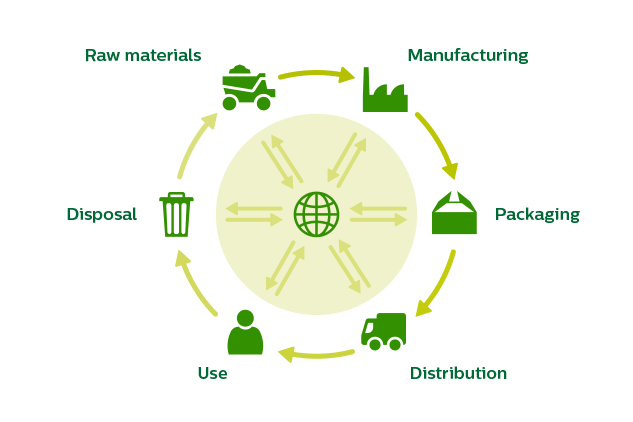As a part of my project, I will do a life-cycle assessment to analyse the impacts of large-scale fortification to the environment. The Msc.CCAFS coursework modules have been quite interesting , yet I must say the Life Cycle Analysis module was somewhat challenging for me. Despite this, I’m glad I’m using this tool in my project as now everything seems to be falling in place and the concepts make better sense. So here goes nothing…..!
Life cycle assessment, is an environmental management technique that considers all the aspects of resource utilization and environmental emissions associated with an industrial system from cradle to grave . This approach takes a holisitc view by assessing activities from the extraction of raw materials from the Earth, production, processing of product and distribution of energy as well as the use, and reuse, and final disposal of a product (Curan, 2008).

The carbon footprints of such activities are measured to estimate the contribution of a particular activity to the environmental load. Carbon footprints compute the combined measure of CO2 and other greenhouse gases, emitted over the full life cycle of a process or product(Allen and Pentland, 2011) in a given time frame. This is described in the slide share below. The difference between an LCA and a Carbon footprint are related to the impact categories which are studied. A Carbon Footprint is focused on one environmental impact category: greenhouse gas emissions (CO2) whereas an LCA takes more impact categories into account, such as land use, water use and acidification.
The ‘Cradle-to- grave’ concept expresses the idea that every step of the product ‘s life cycle is included in the analysis allowing a comprehensive study of the product, highlighting more harmful stages than others (Baedeker et al., 2008 ) .Through this, the LCA approach enables mitigation strategies to be established to reduce the emissions concerned (Brodt et al., 2014) . These constitutive and unique features are what makes the LCA approach to have greater achievements compared to other environmental tools.
Shortcomings of LCA
Over time practitioners have learned the constraints of the LCA methodology.
Schenck and White, 2014, indicates the following;
- System boundaries (scope of study) do vary in LCA studies even when they assess the same product system.
- In a case where a material or input process in a LCA creates multiple products, a precise analysis is required to describe the environmental impact of the different products (time-consuming and costly).
- The accuracy of environmental data, Life-Cycle Impact assessment methods, as well as the wide range of decisions involved, do increase uncertainty of the LCA
results having major effects on the accuracy of the study. These aspects necessitate to clearly documenting the system boundary, the allocation method and the uncertainty assessment when reporting LCA results. - Some environmental data are scarce to find (Andersson , 2012).
Stages of Life-Cycle Assessment
The ISO 14040:2006 describes the principle stages and framework for Life Cycle Assessment including;
Stage 1: Goal and scope; targets to define how the product life cycle will be taken in assessment and to what end will assessment be serving. The criteria serving to system comparison and specific times are described in this step (Krishna et al., 2017).
Stage 2: Inventory analysis gives a illustration/description of material and energy flows within the product system and specifically associates its interaction with environment including consumed raw materials, and emissions to the environment (Krishna et al., 2017).
Stage 3: Impact assessment; details from inventory analysis are used to analyse the impact. The indicator results of all impact categories are detailed in this step; the importance of every impact category is assessed by normalization and eventually also by weighting (Krishna et al., 2017)
Stage 4: Interpretation of a life cycle involves critical review, determination of data sensitivity, and result presentation (Krishna et al., 2017)
Four stages of LCA under the ISO 14040 guidelines:

And how can LCA be applied?
The diagram below describes examples of how the LCA interpreted results can be utilized in various sectors;

That will be all for now.
Cheers!
